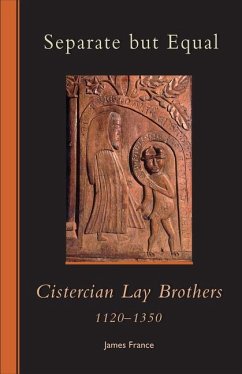The institution of the lay brotherhood (converse) was not original to the Cistercians, but they developed it to its fullest extent. Although lay, the conversi were under the same vows as monks and represented a new form of religious life. While monks were bound to the recitation of the Divine Office, the lay brothers were dedicated to a life of toil and acted as the monks auxiliaries. Their contribution to the spiritual and material life of the Cistercian Order was immense.By consideration of tales from the exemplum literature, evidence from general chapter statutes, and information on the architectural provisions made for the lay brothers in the abbey and on the outlying granges, this book puts flesh on the bare bones of a life directed by their own Usages. The book is richly illustrated with images from manuscripts, stained glass, and architectural sculpture.
Bitte wählen Sie Ihr Anliegen aus.
Rechnungen
Retourenschein anfordern
Bestellstatus
Storno


